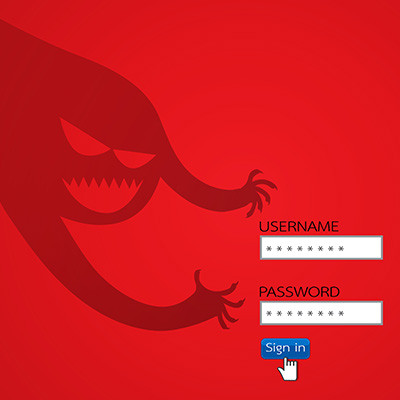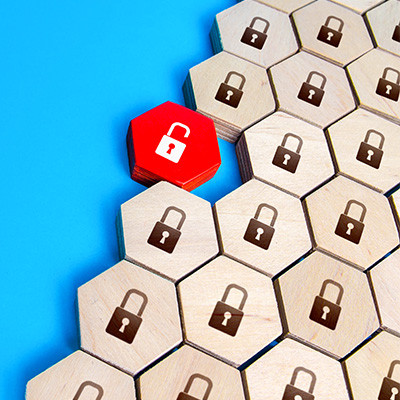Keeping your data safe is extremely important. More precedence has been put on data privacy and security in recent times as phishing and ransomware litter the landscape. Unauthorized access to data can lead to severe consequences. The methods employed by cybercriminals today are more sophisticated than ever; and it quite often allows them to breach organizational data security. Today, we thought we would take a look at a few strategies people are using to protect their data.
Phantom Technology Solutions Blog
It can’t come as a surprise that businesses are starting to grow concerned about the potential of getting hit by a cyberattack. Just look at what's happening out there. Literally millions of hackers trying to enter, steal, and sell your business’ data. To help protect their data, businesses should consider the adoption of a Virtual Private Network (VPN), which adeptly conceals data during its transit. Let's take a look into some of the most compelling reasons why your business should embrace the use of a VPN.
Psychology—the scientific study of the mind and behavior—can provide some significant insights into which actions will ultimately be most beneficial to your company. What message will most effectively reach your clients, how can you inspire more motivation amongst your team, and what can you do to reach your goals more effectively?
Unfortunately, the modern cybercriminals that target businesses just like yours are going to be asking themselves the same questions.
With network security being more important than ever for businesses of all types and trades, it’s important that you make it a priority. Thankfully, there are certain simple ways you can pull this off, even if you’re not a technology expert. Here are some of the network security basics that will cover a lot of ground for your business.
Cyberattacks are nothing to take lightly. Every year, they cause millions of dollars of damage to unprepared and unprotected businesses, which leads to many of these businesses’ failure. Let’s talk about what ultimately causes cyberattacks, so you know the kinds of situations and behaviors to keep an eye out for.
When it comes to who is victimized in cybercriminal efforts, there may be a few stereotypes and presumptions that a lot of people may hold. A recent report, Oh, Behave!, released by the National Cybersecurity Alliance and Cybsafe, shows that the real victims of many forms of cybercrime aren’t who many would expect.
Passwords are what separate you from someone else’s private information, their money, their subscriptions, their personal data, their business, and even their livelihood. If you were able to easily crack a password, you’d have access to the wealth and identity of another person. In this blog, we’re going to show you just how to do that.
What measures do you take to protect your employees and business from the dangers found on the Internet? One major company, Google, is implementing some extreme measures to protect against online threats. In this pilot program, the Internet is simply not available to its workers. How is Google—a company notorious for its search engine and web-related technology—making do with minimal access to the Internet? The answer might surprise you.
Businesses currently face an unprecedented level of threat from data breaches, with more means of undermining their security out there than ever before. Making the situation worse, all it takes is one to bring significant impacts to your business, from financial and reputational loss, not to mention all the potential legal issues that come into play. Let’s review what you need to do should you ever be on the receiving end of a breach.
Running a business is hard enough without having to think about cybersecurity. Your business faces existential threats from cyberattacks every day it’s operational, as data breaches truly do have the power to bring your business down if you’re not prepared for the fallout. A zero trust approach can help to mitigate many of the risks that come from cybersecurity threats, and it’s all thanks to the principle of least permission.
Perhaps the most dangerous and notorious modern malware, ransomware affects businesses and industries without any regard to size or scope. It can even impact individual users and get away with it. We urge businesses to consider the other dangers associated with ransomware beyond just paying the ransom, as they extend far beyond and could have lasting impacts on your operations.
We throw around the term “ransomware” an awful lot, and while we’re confident that most people have some level of familiarity with the concept at this point, it is important that we acknowledge that not everyone has our experience in dealing with it. As such, we wanted to answer some of the questions we hear fairly often about ransomware.
Many companies, individuals, and organizations have sought to get the most value out of cloud computing, making it an industry that also requires a certain level of regulation. With its increasing integration into our daily lives, it’s no small wonder that there is a greater effort to control certain aspects of it. Here is what you can expect from cloud regulation in the near future.
Cybersecurity is complicated, with countless moving parts that all contribute to a well-protected network. This includes password changes, multi-factor authentication, and policies and procedures that could make the average workday a headache for the average office worker. Cybersecurity burnout is a real thing, and it’s becoming a major problem for businesses that don’t approach it intentionally.
Modern businesses depend on cybersecurity to help keep operations from being targeted by hackers and other cybercriminals. Businesses need to be both resilient and agile in how they protect their infrastructure from these threats. Let’s discuss four of the most important ways your business can protect itself from the growing threats of malware, ransomware, phishing attacks, and other cybersecurity threats.




















